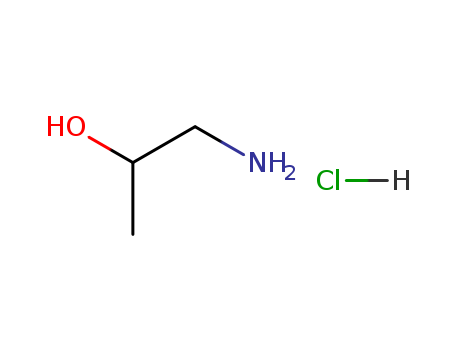- Chemical Name:2-Propanol, 1-amino-, hydrochloride
- CAS No.:7780-04-3
- Molecular Formula:C3H10ClNO
- Molecular Weight:111.572
- Hs Code.:
- European Community (EC) Number:231-948-5
- UNII:93J8D44RP4
- DSSTox Substance ID:DTXSID00884423
- Wikidata:Q27271598
- Mol file:7780-04-3.mol
Synonyms:2-Propanol, 1-amino-, hydrochloride;7780-04-3;1-Aminopropan-2-ol hydrochloride;Isopropanolammonium chloride;2-Propanol, 1-amino-, hydrochloride (1:1);1-aminopropan-2-ol;hydrochloride;93J8D44RP4;(R)-1-AMINO-2-PROPANOL HYDROCHLORIDE;1-amino-2-propanol hydrochloride;UNII-93J8D44RP4;aminopropan-2-ol hydrochloride;SCHEMBL1078061;1-Aminopropan-2-olhydrochloride;DTXSID00884423;EINECS 231-948-5;AKOS028114200;2-HYDROXYPROPYLAMINE HYDROCHLORIDE;AS-62090;ISOPROPANOLAMINE HYDROCHLORIDE, (+/-)-;Q27271598






